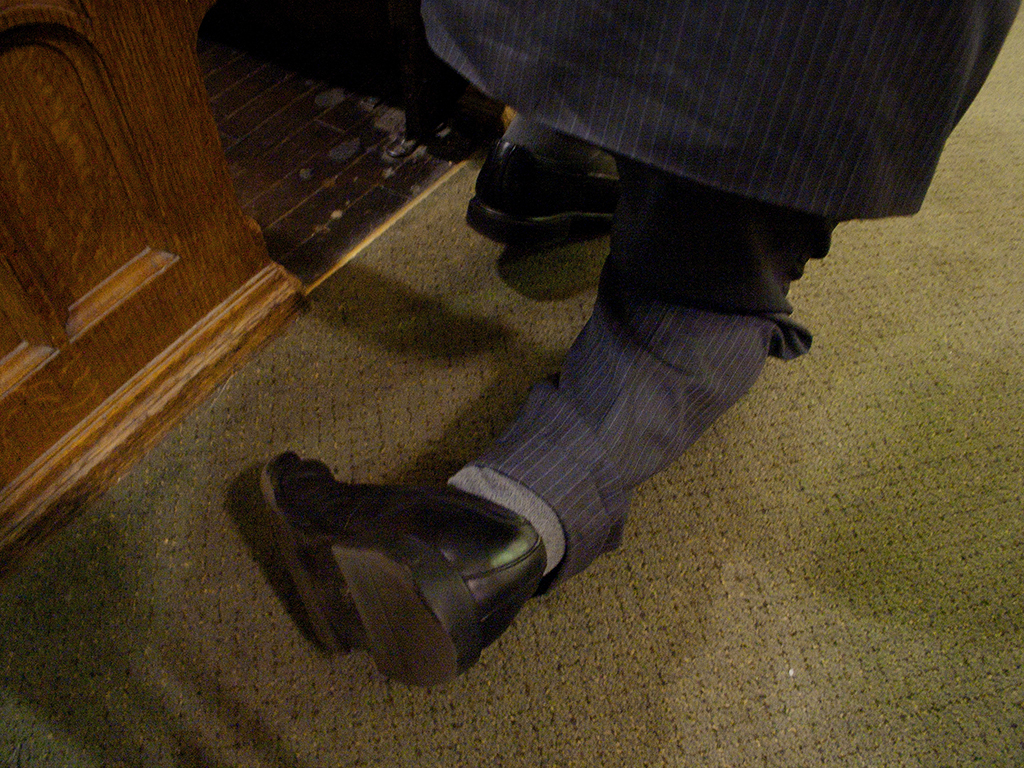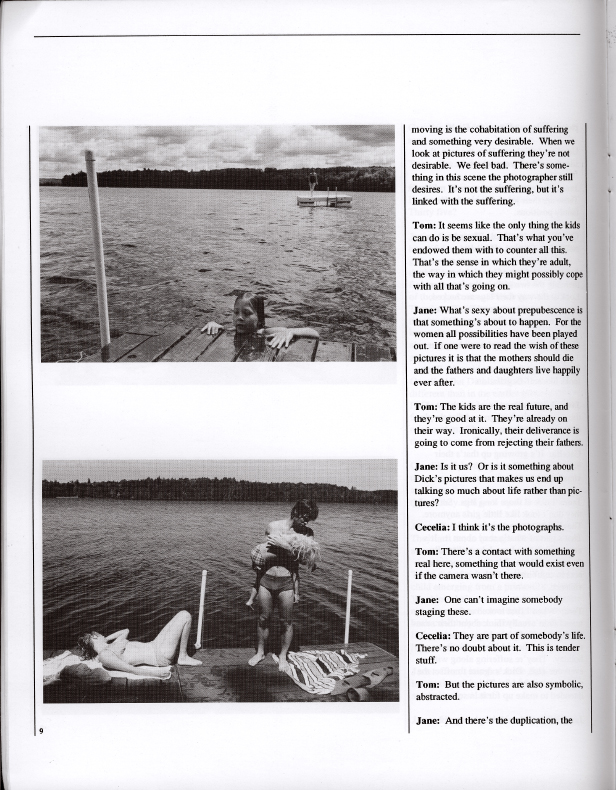Experimental Film and Anthropology
Arnd Scheider and Caterina Pasqualino, eds Bloomsbury Press, 2014

Visual Poetry and Sonic Collage: Dick Blau’s A Polish Easter in Chicago
My third example is A Polish Easter in Chicago (2011) by Dick Blau, an acclaimed stills photographer and professor of film at the University of Wisconsin-Milwaukee, as well as a collaborator in a number of books with anthropologist Steven Feld. The stills for A Polish Easter in Chicago were taken during a three-day Easter Service among the Polish community in Chicago in 2005. Narrative, voiceover, interview, or recorded conversations, on the other hand, are entirely dispensed with, and instead we have a collage of sounds from the Good Friday service in 2005 and the Easter Sunday service in 2011.
We could say that by using the photofilm as his genre, rather than film, Blau halts the ceremony for the eye through the stills, only newly to be woven together through the choice of position in sequence, and the soundtrack recorded at the liturgy, recorded at different times, as well as several times overlaid atmospheric or “presence tracks” to convey as “living, breathing coughing world filled with people, bodies, and echoes. Furthermore, his strategy of letting individual photos speak to us, concurrent with movement as sound, allows us to focus more precisely on individuals, their faces, expressions, gestures, the things they wear, than would have been the case with a continuously moving picture (fig.2.7). Of course, sound here is not an “objective,” reified underlying sound (for example, in the form of prerecorded religious music, but the sonic source is the “real” sound recorded at the event which then gets worked through in a collage of actual liturgy, and atmospheric sound both inside and outside the church (including birdsong, which Blau uses several times).
We have to remind ourselves here that sound both creates space and is placed in space, in other words, it creates spatial imagination. In no way thus is sound recording just an objective, or perhaps not even representative of the sonic depiction of this mass, but only one possibility among many (indeed of the many participating members of the congregation’, telling us as much about the placement or location of the sound recordist and equipment as about the auditory experience of the religious ceremony. Although sound is concurrent to the flow of the photos, we can also say with film scholar Gunnar Iverson that “it emerges from the photo.” Blau uses close-ups, frequent quick fading between pictures, and blurred photographs achieved through longer exposure times. In this photofilm the photos, part of a temporally structured, and forward moving ceremony, themselves instill motion, rather than being threatened by motion, or moving pictures needed to achieve the impression of movement.
Dick Blau writes on background:
The subject itself comes from two sources. After we finished Polka Happiness, I did some sporadic shooting in Chicago, something I called Three Polonias, which looked at the performance of identity and culture/class desire in three different parts of the community. That developed for me into an idea for a book that would be called Polonia USA, a study of Polish Chicago…The project comes for me out of an Interest in theater as much as in ethnography. I grew up in a theater and…I have always been interested in exploring its roots in demotic performance.

The idea to make this series as both a set of stills and also as a film was there from the beginning. I’ve always loved optical printing in 16mm film — as you can see in Tintinnabula (Wiedemann/Blau 1982 — because it opens up a world (and a time) between the still and the moving image that I find fascinating to explore. In this case, I thought it was a perfect way to both tell and ponder a story — not to speak of creating a new picture between the two that were dissolving — and yet still keep moving the story forward. As for the sound,I love Steve Feld’s pieces for Bright Balkan Morning and Skyros Carnival, so it just seemed natural to bring someone to record when I went down to Chicago to shoot. I shot using two cameras. For one set I used a 4 megapixel Canon with a silent shutter and what I realize now was the world’s most discrete focus beam; for the other I used a Canon 20D. The first thing I did was to have a friend photoshop the pictures, then we imported them and the sound into Final Cut Pro.
(Dick Blau, personal communication, February 26, 2012)







